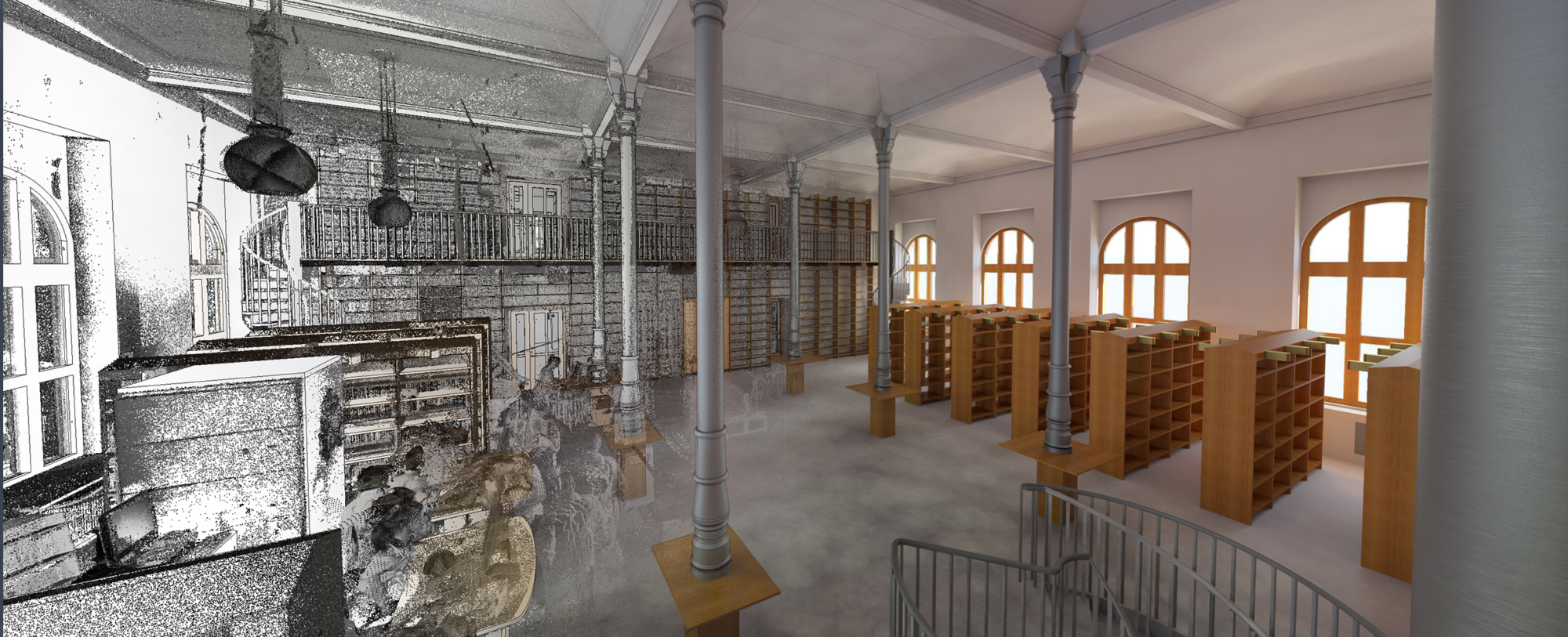This article looking at BIM and its future in FM was written by Service Works Global CEO, Gary Watkins, and was published in the October edition of Facilities Matters. Please click here to view the article.
From humble beginnings, building information modelling (BIM) is slowly but surely becoming commonplace across the design, construction and FM industries. Awareness and adoption have grown from 11% in 2011 to around 70% this year according to the NBS’s National BIM Report 2019, but there is still a noticeable gap between the two. Some may not have yet adopted BIM due to concerns over training and time constraints, yet at the same time there is a real danger of those not jumping on board getting left behind as their competition reaps the advantages and become more efficient.
BIM has revolutionised the building lifecycle by providing an uninterrupted flow of knowledge shared between all stakeholders in order to make the project streamlined– and cheaper – at every phase.
BIM software can identify clashes in the design and construction and FM professionals are able to input their views, such as to make sure the building can accommodate the required assets or identifying access issues. This level of detail and collaboration not only avoids physical rework during the construction process, but also positively impacts the building’s operational phase.
From the moment of handover, FMs are able to access a wealth of information as soon as the building moves into the operational phase. Details such as floorplans, materials, warranty information, serial numbers, components, systems and assemblies, and more are accessible from 2D and 3D models. Having this level of detail at one’s fingertips provides a great advantage and removes the hours of investigation or even guesswork normally required to keep the building running efficiently.
Digital twins
Following the government’s push for public sector projects to reach BIM Level 2 (requiring all project and asset information, documentation and data to be electronic), this is only the beginning for BIM.
Legislation has been increased to require BIM for buildings of at least six storeys following the Grenfell Tower tragedy, and the government is continuing its push for the next phase. BIM Level 3 provides even more benefit for facilities management through the creation of a digital twin: an exact digital replica of all aspects of the building including real-time performance generated from a sensor network. Digital twins are expected to generate £7bn of benefits per year to UK infrastructure, the equivalent of 25% of the total infrastructure spend. For FMs, these twins allow unrivalled control of the building. As well as access to live performance data, the simulation serves as a test environment for change. Tweaks can be made to the virtual building or assets within, as many times as necessary, to understand the risks and results of new ideas without having to make any physical changes.
Pockets of resistance
Despite all the benefits, some may still feel hesitant to implement BIM. Lack of inhouse skills and training are often cited as the main barriers, but for the FM industry, technology is evolving at a rapid pace to overcome this.
Where spreadsheets were previously common for managing maintenance, assets and team resources across their workplace, CAFM has become more popular due to its security, ability to make time consuming tasks like reporting and workload scheduling quicker, and a user friendly interface which reduces the amount of training required. CAFM is also unlocking BIM for facilities managers in the same way by bridging the gap between the raw BIM data and complex data models.
Traditionally, 3D models created in computer aided design (CAD) software required a specialist skillset, outside that of most FM professionals. However, two-way integration of BIM with CAFM software allows updates to building properties or assets to be made from either the CAFM system or BIM model.
Through this integration, the FM team can easily access information such as building materials, asset information and of course, see the locations of anything in the facility on a 2D or 3D model. This is a great time saver as an engineer called out to a job can use BIM to see where the job is, get relevant manuals and documentation on a mobile device, see what parts might be needed, confirm if they are in stock, and check if there are any access restrictions for which a permit or special training is required.
The launch of ISO 19650 in 2018 has served to make BIM even more accessible, as the international standard has unified practices across the world. And with global standards come global best practices, making it easier for companies to improve how they use BIM and gain more value from the process (whether they are part of an international company or not).
Immersive tech
Considering the digital, visual nature of BIM, it’s hardly surprising to see its close partnership with virtual reality (VR). Over time, the cost of VR solutions has reduced and technology advancements have made it more accessible to FM. For example, through just a simple cardboard headset and mobile phone, users are able to experience a virtual tour of the inside of a building. They can ‘walk’ around the room, through doors and look in any direction as if they are physically there. VR BIM provides significant benefits for landlords and property owners who can use it to show their facility to potential tenants, or it can be used by FM teams to view remote sites in detail. It can also help with project or business case sign-off, for example to gain approval for a new extension by giving the Board a better understanding of the benefits or even the changes that need making – which can be difficult to visualise on a 2D floor plan.
At a maintenance level, engineers can use mixed reality devices that overlay virtual data onto real physical assets. For example, when looking at a wall, the engineer can see where wiring and pipework lies to avoid damage which greatly reduces time spent on each job as well as accidents. Devices such as these can even project instructions to help engineers accurately repair unfamiliar assets.
Equal opportunities
For those buildings that pre-date BIM, it is not too late to benefit from BIM services. 2D and 3D models can be created retrospectively and asset data added to form a BIM model. Buildings are scanned with a laser, or pictures can be taken using cameras or a drone. A point cloud is created from this data which is then used to create a realistic scale model. This shows correct dimensions of all the rooms and areas within, which can be colour coded according to requirements, such as with their function, who is renting them, or what standard they must be upheld to (for example, the level of cleanliness required for different hospital rooms). A CAFM system is then integrated to provide connection with an asset database, which provides the remaining information required for the BIM model.
Time for change
With limited budgets and high pressure to perform, FM can sometimes be a risk averse, ‘wait and see’ industry. The government public sector mandate seemed to take the industry by surprise, and BIM integration has not happened as quickly as expected. But, increasing levels of BIM adoption has provided case studies of successful BIM implementation (for both new and existing buildings) and the roll out of the government’s strategy for Level 3 BIM has helped to provide a better understanding of what the future holds for FM.
It is now easier than ever to use the required tools, thanks to integration with CAFM providing a familiar platform on which to make updates and view the models, and there is more data available on which to provide a credible business case. 25 years ago the FM industry was managing its facilities on spreadsheets and paper until CAFM software revolutionised this process. The same is now happening with BIM, and those not planning to incorporate this process into their organisations risk finding themselves lagging behind the competition.
For more information about BIM and how Service Works Global can help with 3D laser scanning, modelling and managing your data, call 020 8877 4080 or request a demonstration.








